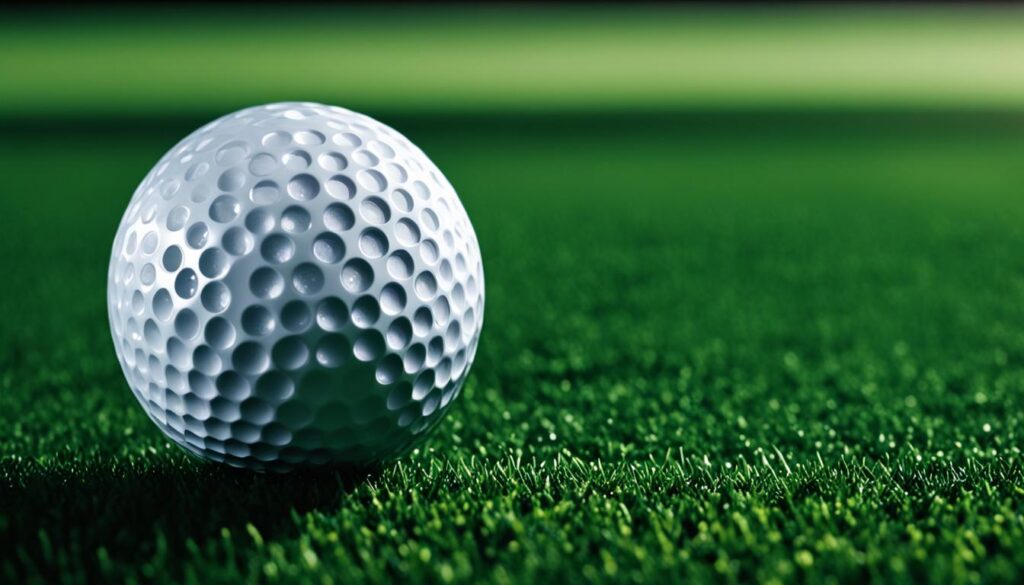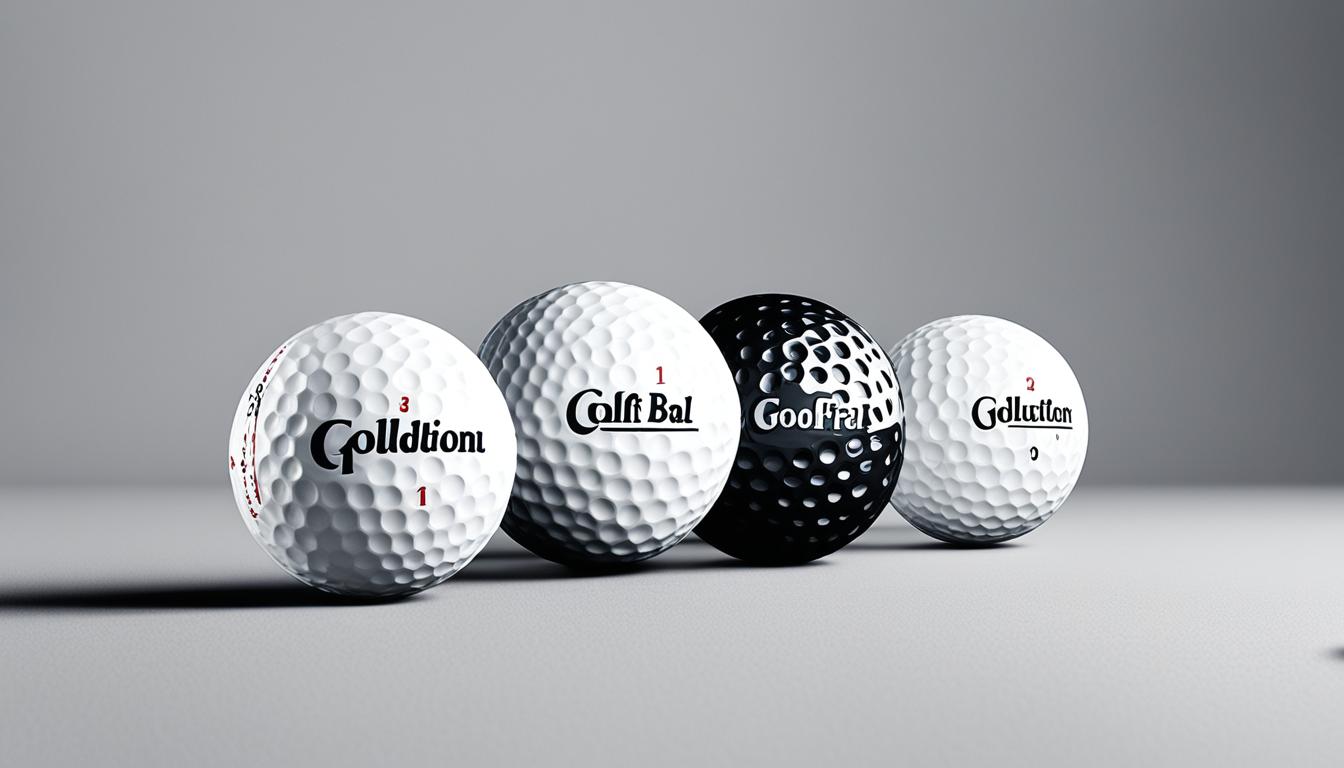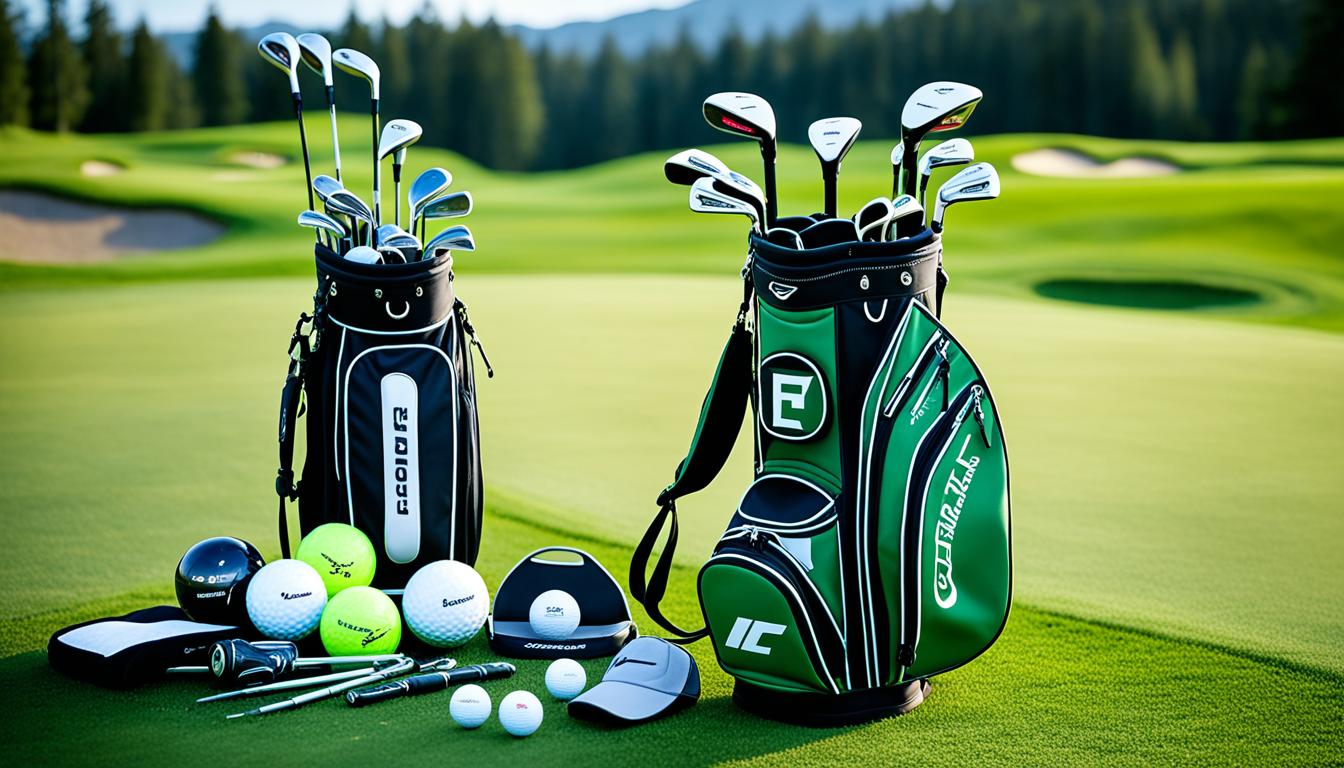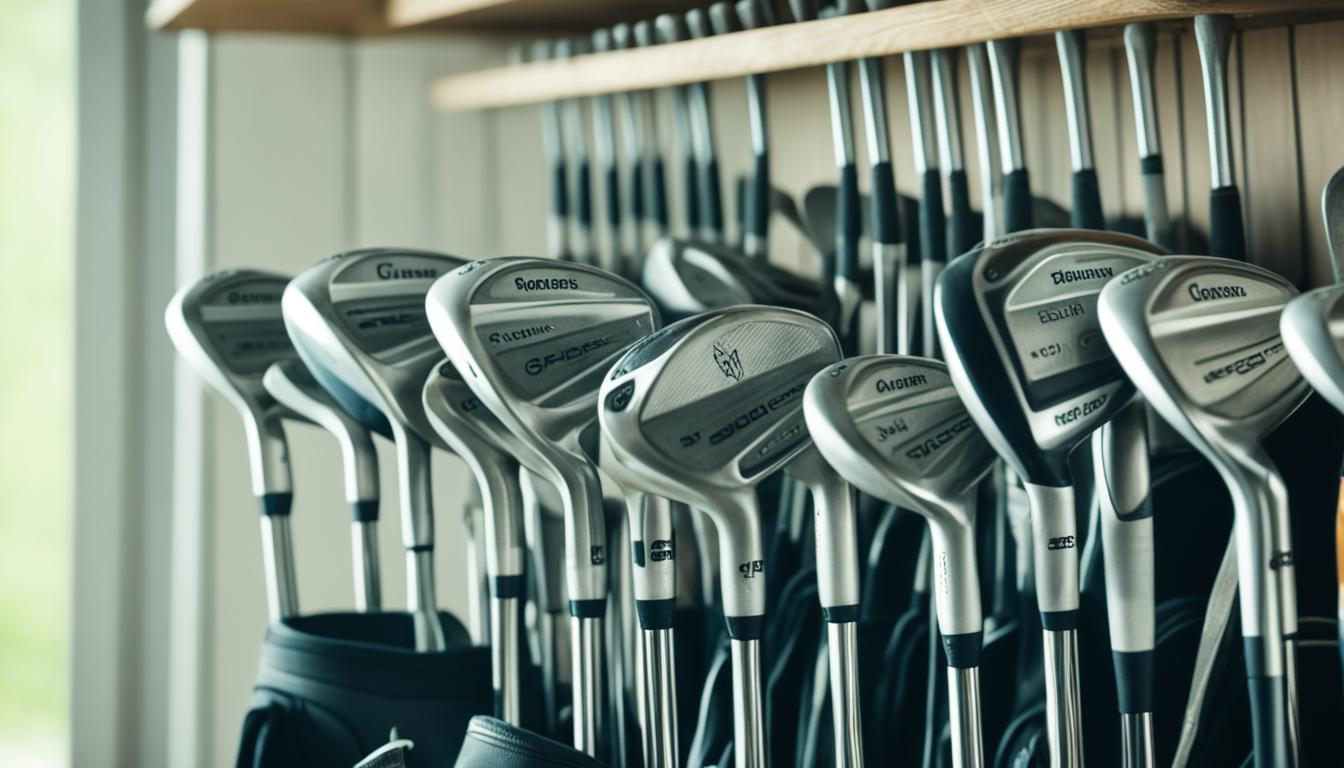A golf ball is central to the game of golf, affecting the player’s performance in terms of distance, control, and accuracy. The history of golf balls goes back centuries and has seen several revolutions. From the mythical origins of the game to the modern innovations in golf ball technology, the evolution of golf balls has been marked by advancements in design, materials, and construction techniques. This article explores the different types of golf balls throughout history and how they have changed over time.
Key Takeaways:
- The evolution of golf balls has been driven by advancements in design, materials, and construction techniques.
- Golf balls have evolved from wooden balls to the modern rubber core balls.
- Dimple patterns on golf balls improve aerodynamics and distance.
- Colored golf balls offer improved visibility on the course.
- The future of golf balls holds promise with ongoing technological advancements and customization options.
The Beginnings: Mythical Origins and Early Golf Balls
The origins of golf balls are shrouded in myth and legend, with stories of shepherds using rounded stones as the first golf balls. But the game of golf as we know it today can be traced back to medieval Scotland, where a stick and ball game was played, commonly known as “gowf.”
In the 15th century, the first recorded golf balls were made of wood. These early golf balls were most likely fashioned by craftsmen, who carefully carved them into a round shape. However, due to their solid construction, they could only be used for a limited period of time before they would lose their shape and effectiveness.
The Featherie: A Leap Forward in Golf Ball Design
In the 17th century, the game of golf witnessed a significant development with the introduction of the Featherie. This marked the first standardized golf ball. The Featherie was made by stuffing a leather pouch with feathers, often from cow or horsehide. The process included stitching the pouch together and then compressing the feathers inside. Once complete, the Featherie was coated with paint and left to dry, resulting in a durable and resilient golf ball.
The Featherie’s design provided more consistency in terms of size and performance compared to its wooden predecessors. It offered a better flight trajectory and distance, making it a game-changer for golfers of the time.
The Gutta Percha Ball: A Revolutionary Material
In the 19th century, a new material emerged that revolutionized the game of golf—the Gutta Percha Ball. Made from the gum of the Gutta Percha tree found in Southeast Asia, this ball had a solid and rubber-like core. The Gutta Percha Ball was created by heating the gum and molding it into a round shape.
The Gutta Percha Ball offered significant improvements in distance, durability, and consistency compared to the Featherie. Golfers could hit it harder without worrying about damaging the ball, and it also had a better balance, resulting in more accurate shots.
The Rubber-Wound Golf Ball: Taking Flight with Enhanced Performance
Building on the success of the Gutta Percha Ball, the Rubber-Wound Golf Ball emerged in the late 19th century. This ball featured a solid rubber core surrounded by tightly-wound rubber thread. The rubber-wound construction allowed for even greater energy transfer upon impact, resulting in increased distance and control.
The Rubber-Wound Golf Ball represented a significant advancement in golf ball technology at the time. Its combination of a rubber core and solid cover made it more durable and long-lasting compared to previous designs.
| Golf Ball Type | Main Material | Key Advancements |
|---|---|---|
| Wooden Golf Ball | Wood | Durable but prone to warping |
| Featherie | Leather pouch stuffed with feathers | Standardized size and performance |
| Gutta Percha Ball | Gutta Percha tree sap | Improved distance and durability |
| Rubber-Wound Golf Ball | Rubber core and wound rubber thread | Enhanced energy transfer and durability |
Innovation Drives Evolution
The development of the Featherie, Gutta Percha Ball, and Rubber-Wound Golf Ball marked significant milestones in the evolution of golf balls. These early advancements laid the foundation for future innovations and improvements to golf ball design and performance. As the game of golf continued to grow in popularity, golf ball manufacturers embraced technology and continued to refine their designs to meet the ever-changing demands of golfers.
The Rise of the Modern Golf Ball
At the turn of the 20th century, the golf ball underwent a transformative evolution, giving birth to the modern golf ball as we know it today. This breakthrough can be attributed to the introduction of the rubber core golf ball, a pioneering innovation by Coburn Haskell and the B.F. Goodrich Company.
The modern golf ball revolutionized the game with its unique construction. It featured a rubber core surrounded by a durable cover, which significantly improved its performance on the golf course. The rubber core provided exceptional resilience and enhanced the ball’s ability to transfer energy upon impact, resulting in greater distance and trajectory.
To further optimize its aerodynamics and distance capabilities, dimple patterns were introduced to the surface of the golf ball. These dimples altered the way air flowed around the ball, reducing drag, and allowing it to cut through the air more efficiently. As a result, golfers experienced improved distance and accuracy, making the modern golf ball an essential tool for achieving optimal performance.
Advancements in materials also played a crucial role in the rise of the modern golf ball. Golf ball covers underwent significant developments with the use of materials like Surlyn and urethane. These advanced cover materials provided exceptional durability and enhanced control, giving golfers the confidence to execute precise shots.
The modern golf ball offers a perfect balance of distance, accuracy, trajectory, and feel. Its rubber core, dimple pattern, and advanced cover materials work in unison to deliver optimal performance and an enjoyable golfing experience. Whether you’re a beginner or a seasoned golfer, the modern golf ball is designed to help you elevate your game to the next level.

The Advent of Colored Golf Balls
In the 1970s, a colorful revolution took over the world of golf. Golfers everywhere were no longer confined to the traditional white golf ball. Colored golf balls became the trend, adding a touch of vibrancy and personality to the game.
It all started with yellow golf balls. Spalding introduced the first notable colored golf ball, a bright and eye-catching yellow. Not long after, Titleist followed suit and launched their own successful line of yellow golf balls. These yellow golf balls quickly gained popularity among golfers who wanted to stand out on the course.
In the 1990s, pink golf balls made their grand entrance. More than just a fashion statement, these pink golf balls were designed to raise awareness for breast cancer research. Golfers embraced this meaningful cause while playing their favorite game, combining charity with their love for golf.
As colored golf balls continued to make their mark, orange and green options became available. These colors not only added a fun twist to the game but also improved visibility on the course. Orange golf balls stood out against the green grass, making it easier for golfers to locate their shots. Meanwhile, green golf balls blended harmoniously with the natural surroundings, providing a unique aesthetic appeal.
| Color | Advantages |
|---|---|
| Yellow | High visibility, stands out on the course |
| Pink | Raise awareness for breast cancer research |
| Orange | Improved visibility on the course |
| Green | Blends with natural surroundings, unique aesthetic |
One standout in the world of colored golf balls is the Truvis golf ball from Callaway. Featuring a unique and playful soccer ball pattern, the Truvis golf ball combines functionality with a fun design. Golfers can enjoy the benefits of enhanced visibility while adding a touch of creativity to their game.
Colored golf balls have added excitement, creativity, and visibility to our beloved game. Whether it’s standing out with a vibrant yellow, supporting a cause with pink, or improving visibility with orange and green, these colorful options have become a favorite among golfers.
So, if you’re ready to make a statement on the golf course and inject some personality into your game, colored golf balls are the way to go. Stand out from the crowd, support a cause, or simply enjoy the aesthetic appeal. The choice is yours, and it’s all part of the colorful evolution of golf balls.
The Future of Golf Balls
As technology continues to advance, the future of golf balls looks promising. Manufacturers are constantly researching and developing new materials, designs, and manufacturing techniques to enhance golf ball performance. The focus is on improving distance, control, accuracy, and durability. Customization options are also becoming more prevalent, allowing golfers to choose balls tailored to their individual needs and playing styles. With each passing year, golf balls are expected to deliver better performance and a more enjoyable golfing experience.
Innovations in golf ball technology have the potential to revolutionize the game, enabling golfers to achieve greater distances, enhanced control, and improved accuracy. Technological advancements can lead to golf balls that are more aerodynamic, ensuring optimal flight paths and reduced drag. Improved materials can provide enhanced feel and response, allowing golfers to better judge their shots and make precise adjustments.
“The future of golf balls lies in harnessing the power of technology, combining innovation with the needs and preferences of golfers. Customization options will enable players to fine-tune their equipment to suit their playing style and optimize their performance on the course.”
Customization is a key aspect of the future of golf balls. Golfers will have the opportunity to personalize their balls by selecting specific features such as core compression, cover materials, and dimple patterns. This level of customization allows golfers to tailor their golf balls to their swing speed, desired feel, and performance requirements.
Furthermore, the integration of technology into golf balls opens up new possibilities for tracking and analyzing performance data. Smart golf balls equipped with sensors can provide valuable insights into aspects such as launch angle, spin rate, and overall shot performance. This data can help golfers refine their technique, identify areas for improvement, and make more informed decisions on the course.
The Benefits of Technological Advancements
- Improved distance: Technological advancements enable golf balls to achieve greater distances, allowing golfers to reach the green more easily.
- Enhanced control: Innovations in golf ball technology provide better control over shots, resulting in improved accuracy and consistency.
- Customization options: Golfers can personalize their balls to suit their individual preferences, optimizing their performance and enhancing their playing experience.
- Durability: Advanced materials and manufacturing techniques ensure that golf balls are more resilient and longer-lasting.
- Data-driven insights: Smart golf balls equipped with sensors provide valuable performance data, aiding golfers in analyzing their shots and making data-driven improvements.
With ongoing advancements in golf ball technology, the future of the game looks exciting. Golfers can expect golf balls that offer enhanced performance, improved customization options, and a more enjoyable golfing experience.

Conclusion
The evolution of golf balls has been a remarkable journey, showcasing the relentless pursuit of innovation and performance in the game of golf. From the early days of wooden balls and Featheries to the rubber core golf balls and modern materials, golf balls have come a long way in terms of design, construction, and performance.
Today, golf balls are meticulously engineered to offer golfers the perfect balance of distance, control, and feel. Advancements in materials like Surlyn and urethane, coupled with the incorporation of dimple patterns for improved aerodynamics, have revolutionized the game and enabled players to achieve greater distances and accuracy.
But the evolution doesn’t stop there. As technology continues to advance, golf ball manufacturers are constantly pushing the boundaries of innovation. With ongoing research and development, the future promises even more exciting developments in golf ball technology.
Customization options are also becoming increasingly popular, allowing golfers to personalize their equipment to suit their individual preferences and playing styles. This customization, combined with the continuous advancements in materials and design, ensures that golfers can maximize their performance on the course.
The evolution of golf balls is a testament to the passion and dedication of golfers and manufacturers alike. As we strive for better performance and an enhanced golfing experience, rest assured that the evolution of golf balls will continue, paving the way for new heights in the game of golf.
FAQ
What are the different types of golf balls throughout history?
The different types of golf balls throughout history include wooden balls, Featherie balls stuffed with feathers, Gutta Percha balls made from dried tree sap, Rubber-Wound balls with a rubber core, and modern golf balls with a rubber core and durable cover.
Who invented the modern rubber core golf ball?
The modern rubber core golf ball was invented by Coburn Haskell and the B.F. Goodrich Company.
How do dimple patterns improve golf ball performance?
Dimple patterns on golf balls improve aerodynamics by reducing drag, resulting in increased distance and control.
What are the advantages of colored golf balls?
Colored golf balls offer improved visibility on the course and add excitement and creativity to the game.
What does the future of golf balls hold?
The future of golf balls holds ongoing technological advancements, customization options, and a focus on improving performance, control, accuracy, and durability.



